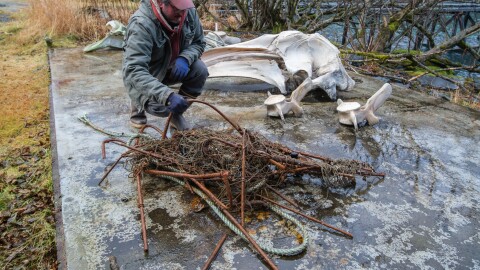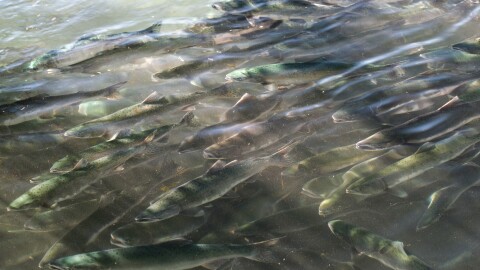-
Scientists believe it was caught in some kind of old fishing gear. It’s at least the 13th dead humpback reported around the archipelago this year.
-
This summer’s salmon season was the 12th largest harvest in the last 40 years. It was also the 13th lowest in value when accounting for inflation. That’s according to preliminary numbers from the state.
-
The money comes from the Southeast Conference's Alaska Mariculture Cluster, as part of a $49 million it received from a federal grant awarded back in 2022.
-
Commercial fishing reopened near the Kitoi Bay Hatchery after a fishing boat spilled over 3,000 gallons of diesel in the area.
-
It's the only region in the state with a higher harvest for the species compared to the last odd year season. Ayakulik sockeye escapement hit a 10-year high, but other south side rivers have had "weak" runs. Kodiak Chinook returns once again near record lows.
-
Corey Potter, who pled guilty earlier this year to federal charges for sending diseased crab to Washington state, now faces fines for violations of the Clean Water Act.
-
Dunleavy has canceled a broadly supported bill proposed by a legislative task force and intended to help commercial fishers in Alaska. The governor issued his veto of Senate Bill 156 on Wednesday July 16, marking his seventh veto of a policy bill this year.
-
Historically low numbers of chinook, or king salmon have been returning to their natal streams in the Gulf of Alaska. As a result, the Alaska Department of Fish and Game (ADF&G) has taken steps to restrict both sport and commercial fishing opportunities.
-
Saltery Cove joins the Buskin and Ayakulik Rivers with sport sockeye limits being raised to 10 fish per day.
-
The issue has grown so urgent that lawmakers are hoping to do something about it.
-
Illegal fishing took center stage at a recent Senate subcommittee meeting led by Sen. Dan Sullivan.
-
A dozen young fishermen completed Kodiak’s first training program to give them an idea of life on the water and learn marine safety. The three day certification program finished days before some of the first openers for salmon seining around the archipelago.















